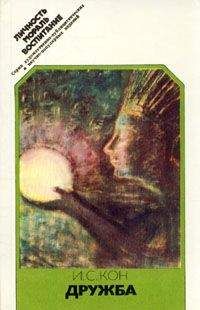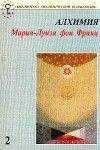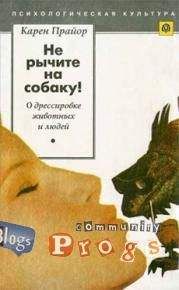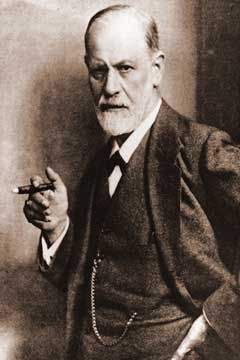Эллиот Аронсон - Общественное животное. Введение в социальную психологию
Скачивание начинается... Если скачивание не началось автоматически, пожалуйста нажмите на эту ссылку.
Жалоба
Напишите нам, и мы в срочном порядке примем меры.
Описание книги "Общественное животное. Введение в социальную психологию"
Описание и краткое содержание "Общественное животное. Введение в социальную психологию" читать бесплатно онлайн.
97. Stephan, W. (1975). An experimental study of interethnic competition in segregated schools. Journal of School Psychology, 13, 234-247.
98. Geffner, R. (1978). The effects of interdependent learning on self-esteem, inter-ethnic relations, and intra-ethnic attitudes of elementary school children: A field experiment. Unpublished Ph. D. dissertation, University of California, Santa Cruz. Gon^ale^, A. (1979). Classroom cooperation and ethnic balance. Unpublished Ph. D. dissertation, University of California, Santa Cruz.
99. Lucker, W., Rosenfield, D., Sikes, J., amp; Aronson, E. (1977). Performance in the interdependent classroom: A field study. American Educational Research Journal, 13, 115-123.
100. Desforges, D.M., Lord, C.G., Ramsey, S.L., Mason, J.A., Van Leeuwen, M.D., West, S.C., amp; Lepper, M.R. (1991). Effects of Structured Cooperative Contact on changing negative attitudes towards stigmatized social groups. Journal of Personality and Social Psychology, 60, 531-544.
101. Gaertner, S.L., Mann, J.A., Dovidio, J.F., Murrell, A. J., amp; Pomare, M. (1990). How does cooperation reduce intergroup bias? Journal of Personality and Social Psychology, 59,692-704.
102. Bridgeman, D. (1981). Enhanced role-taking through cooperative interdependence: A field study. Child Development, 52, 1231-1238.
103. Stephan, С., Kennedy, J., amp; Aronson, E. (1977). Attribution of luck or skill as a function of cooperating or competing with a friend or acquaintance. Sociometry, 40, 107-1 II. Presser, N., Stephan, C., Kennedy, J., amp; Aronson, E. (1978). Attributions to success and failure in cooperative, competitive, and interdependent interaction. European Journal of Social Psychology, 8, 269-274. Stephan, S., Burnhain, M., amp; Aronson, E. (1979). Attributions for success and failure after cooperation, competition, or team competition. European Journal of Social Psychology, 9, 109-114,
104. Slavin, R. (1990). Research on cooperative learning: Consensus and controversy. Educational Leadership, 52-54.
105. Kohn, A. (1986). No Contest. Boston: Houghton Mifflin.
106. McConahay, J.B. (1981). Reducing racial prejudice in desegregated schools. In W.D. Hawley (Ed.), Effective school desegregation. Beverly Hills, CA: Sage.
107. Gonzalez., A. (1979). Classroom cooperation and ethnic balance. Unpublished Ph.D. dissertation, University of California, Santa Cruz. Aronson, E., amp; Gonzalez., A. (1988). Desegregation, jigsaw and the Mexican-American experience. In P. Katz and D. Taylor, Eliminating Racism. New York: Plenum.
108. Pettigrew, T.F. (1961). Social psychology and desegregation research. American Psychologist, 15, 61-71.
К главе 8 Симпатия, любовь и межличностная сенситивность
1. Darwin, С. (1910). The expression of emotions in man and animals. New York: Appleton.
2. Carnegie, D. (1937). How to win friends and influence people. New York: Simon amp; Schuster. Рус. пер. - КарнегиДейл. Как завоевывать друзей и оказывать влияние на людей. М.: Прогресс, 1989.
3. Remmers, Н.Н., amp; Radler, D.H. (1958). Teenage attitudes. Scientific American, 198 (6), 25-29.
4. Lemmann, Т., amp; Solomon, R. (1952). Group characteristics as revealed in sociometric patterns and personality ratings. Sociometry, 15, 7-90.
5. Homans, G. (1961). Social behavior: Its elementary forms. New York: Harcourt, Brace and World.
6. Walster (Hatfleld), E., Aronson, V., Abrahams, D., amp; Rottman, L. (1966). Importance of physical attractiveness in dating behavior. Journal of Personality and Social Psychology, 5,508-516.
7. Буте, D. (1969). Attitudes and attraction. In L.Berkowitz (Ed.), Advances in experimental social psychology (Vol. 4). New York: Academic Press.
8. Sherif, М. (1956). Experiments in group conflict. Scientific American, 195, 53-58.
9. Aronson, E., Stephan, C., Sikes, J., Blaney, N., amp; Snapp, М. (1978). The jigsaw classroom. Beverly Hills, CA: Sage Publications. Aronson, E., amp; Osherow, N. (1980). Cooperation, prosocial behavior, and academic performance: Experiments in the desegregated classroom. In L. Bickman (Ed.), Appliedsocialpsychology annual (Vol. I, pp. 163-196). Beverly Hills, CA: Sage Publications.
10. Aronson, E., amp; Mills, J. (1959). The effect of severity of initiation on liking for agroup. Journal of Abnormal and Social Psychology, 59, 177-181.
11. Aronson, E., amp; Darwyn, L. (1965). Gain and loss of esteem as determinants of interpersonal attractiveness. Journal of Experimental Social Psychology, 1, 156-171. Aronson, E., amp; Worchel, P. (1966). Similarity versus liking as determinants of interpersonal attractiveness. Psychonomic Science, 5, 157-158. Sigall, H., amp; Aronson, E. (1969). Liking for an evaluator as a function of her physical attractiveness and nature of the evaluations. Journal of Experimental Social Psychology, 5, 93-100.
12. Amabile, Т. (1983). Brilliant but cruel: Perceptions of negative evaluators. Journal of Experimental Social Psychology, 19, 146-156.
13. Deutsch, М., amp; Solomon, L. (1959). Reactions to evaluations by others as influenced by self-evaluations. Sociometry, 22, 93-112.
14. Jones, E.E. (1964). Ingratiation. New York: Appleton-Century-Crofts.
15. Jennings, ff.H. (1959). Leadership and isolation (2nd ed.). New York: Longman, Green.
16. Lott, B., amp; Lott, A. (1960). The formation of positive attitudes toward group members. Journal of Abnormal and Social Psychology, 61, 297-300.
17. Brehm, J., amp; Cole, A. (1966). Effect of a favor which reduces freedom. Journal of Personality and Social Psychology, 3, 420-426.
18. Толстой Л. Н. (1863-69). Война и мир. М.: Художественная литература, 1968.
19. Bigelow, J. (Ed.). (1916). The autobiography of Benjamin Franklin (pp. 216- 217). New York: G.P. Putnam's Sons.
20. Jecker, J., amp; Landy, D. (1969). Liking a person as a function of doing him a favor. Human Relations, 22,371-378.
21. Lerner, М., amp; Simmons, С. (1966). Observer's reaction to the ‹innocent victim›: Compassion or rejection? Journal of Personality and Social Psychology, 4, 203-210.
22. Lott, A.J., Lott, B.E., Reed, T., amp; Crow,T. (1960). Personality-trait descriptions of differentially liked persons. Journal of Personality and Social Psychology, 16, 284-290.
23. Bales, R. (1958). Task roles and social roles in problem solving groups. In E.E. Maccoby, T.M. Newcomb, and E.L. Hartley (Eds.), Readings in social psychology (3rd ed., pp. 437-447). New York: Holt. Bales, R., amp; Slater, P. (1955). Role differentiation in small decision-making groups. In T. Parsons and R.F. Bales (Eds.), The family, socialization, and interaction process. Glencoe, IL: Free Press.
24. Aronson, E., Willerman, B., amp; Floyd, J. (1966). The effect of a pratfall on increasing interpersonal attractiveness. Psychonomic Science, 4, 227-228.
25. Deaux, К. (1972). To err is humanizing: But sex makes a difference. Representative Research in Social Psychology, 3, 20-28.
26. Aronson, E., Helmreich, R., amp; LeFan, J. (1970). To err is humanizing - sometimes: Effects of self-esteem, competence, and a pratfall on interpersonal attraction. Journal of Personality and Social Psychology, 16, 259-264.
27. Tesser, A., amp; Brodie, At. (1971). A note on the evaluation of a ‹computer date›. Psychonomic Science, 23,300.
28. Feingold, A. (1990). Gender differences in effects of physical attractiveness on romantic attraction: A comparison across Five research paradigms. Journal of Personality and Social Psychology, 59, 981-993.
29. Walster, Aronson, Abrahams, amp; Rottman, Importance of physical attractiveness.
30. White, G. (1980).Physical attractiveness and courtship progress. Journal of Personality and Social Psychology, 39, 660-668.
31. Dion, К., Berscheid, E., amp; Walsler(Hatfield), E. (1972). What is beautiful is good. Journal of Personality and Social Psychology, 24, 285-290.
32. Tan, A.S. (1979). TV beauty ads and role expectations of adolescent female viewers. Journalism Quarterly, 56, 283-288.
33. Dion, К., amp; Berscheid, Е. (1971). Physical attractiveness and sociometric choice in nursery school children. Mimeographed research report.
34. Dion, K. (1972). Physical attractiveness and evaluation of children's transgressions. Journal of Personality and Social Psychology, 24, 207-213. Похожие результаты сообщаются в: Berkowit^, L., amp; Frodi, А. (1979). Reactions to a child's mistakes as affected by her/his looks and speech. Social Psychology Quarterly, 42, 420-425.
35. Frieze, I.H., Olson, J.E., amp; Russell, J. (1991). Attractiveness and income for men and women in management. Journal of Applied Social Psychology, 21, 1039-1057.
36. Sigall, H., amp; Aronson, Е. (1969). Liking for an evaluator as a function of her physical attractiveness and nature of the evaluations. Journal of Experimental and Social Psychology, 5,93-100.
37. Sigall, H., amp; Ostrove, N. (1975). Beautiful but dangerous: Effects of offender attractiveness and nature of the crime on juridic judgement. Journal ofPersonality and Social Psychology, 31,410-414.
38. Downs, C.A., amp; Lyons, P.M. (1991). Natural observations of the links between attractiveness and initial legal judgements. Personality and Social Psychology Bulletin, 17, 541-547.
39. Sigall, H., amp; Landy, D. (1973). Radiating beauty: Effects of having physical attractive partner on person perception. Journal of Personality and Social Psychology, 28, 218-224.
40. Snyder, M., Tanke, E.D., amp; Berscheid, Е. (1977). Social perception and interpersonal behavior: On the self-fulfilling nature of social stereotypes. Journal of Personality and Social Psychology, 35, 656-666.
41. Byrne, Attitudes and attraction.
42. Rosenbaum, M.E. (1986). The repulsion hypothesis: On the nondevelopment of relationships. Journal of Personality and Social Psychology, 51, 1156-1166.
43. Sigall, H. (1970). The effects of competence and consensu-ll validation on a communicator's liking for the audience. Journal of Personality and Social Psychology, 16, 251-258.
44. Marks, G., Miller, N., amp; Maruyama, M. (1981). Effect of targets' physical attractiveness on assumptions of similarity. Journal of Personality and Social Psychology, 41, 198-206. Granberg, D., amp; King, M. (1980). Crosslagged panel analysis of the relation between attraction and perceived similarity. Journal ofExperimental Social Psychology, 16, 573-581.
45. Aronson, Е., amp; Worchel, S. (1966). Similarity versus liking as determinants of interpersonal attractiveness. Psychometric Science, 5, 157-158. Condon, J. W., amp; Crano, W.D. (1988). Inferred evaluation and the relationship between attitude similarity and interpersonal attraction. Journal of Personality and Social Psychology, 54, 789-797.
46. Secord, P., amp; Backman, C. (1964). Interpersonal congruency, perceived similarity, and friendship. Sociometry, 27, 115-127.
47. Curtis, R.C., amp; Miller, K. (1986). Believing another likes or dislikes you: Behaviors making the beliefs come true. Journal of Personality and Social Psychology, 51, 284-290.
48. Walster (Hatfield), Е. (1965). The effect of self-esteem on romantic liking. Journal of Experimental and Social Psychology, 1, 184-197.
49. Kiesler, S.B., amp; Bora!, R.L. (1970). The search for a romantic partner: The effects of self-esteem and physical attractiveness on romantic behavior. In K.J. Gergen and D. Marlowe (Eds.), Personality and social behavior. Reading, MA: Addison-Wesley.
50. Grube, J., Kleinhesselink, R., amp; Keamey, K. (1982). Male self-acceptance and attraction toward women. Personality and Social Psychology Bulletin, 8, 107-1 12.
51. Van Gorp, G., Stempfle, J., amp; Olson, D. (1973). Dating attitudes, expectations, and physical attractiveness. Unpublished paper, reported in Z. Rubin, Liking and loving: An invitation to social psychology (p. 68). New York: Holt, Rinehart and Winston.
52. Jones, E.E., Bell, L., amp; Aronson, E. (1971). The reciprocation of attraction from similar and dissimilar others: A study in person perception and evaluation. In Experimental social psychology (pp. 142-183). New York: Holt, Rinehart and Winston.
53. Aronson, E., amp; Linder, D. (1965). Gain and loss of esteem as determinants of interpersonal attractiveness. Journal of Experimental and Social Psychology, 7, 156- 171. CM. также: Gerard, H., amp; Greenbaum, С. W. (1962). Attitudes toward an agent of uncertainty reduction. Journal of Personality, 30, 485-495. Mettee, D., Taylor, S.E., amp; Friedman, H. (1973). Affect conversion and the gain-loss like effect, Sociometry, 36, 505-519. Aronson, E., amp; Mettee, D. (1974). Affective reactions to appraisal from others. In Foundations of interpersonal attraction. New York: Academic Press. Clore, G.L., Wiggins, N.H., amp; ltkin, S. (1975). Gain and loss in attraction: Attributions from nonverbal behavior. Journal of Personality and Social Psychology, 31, 706-712.
54. Ibid.
55. Spinoza, В. de (1910). The ethics. In A. Boyle (Trans.), Spinoza's ethics and ‹De Intellectus Emendatione›. New York: Dutton. Рус. пер. - Спиноза Б. Этика. Введение в основания нравственности и законодательства//Избр. произв. Т. 1. М.: Госполитиздат. 1957.
Подписывайтесь на наши страницы в социальных сетях.
Будьте в курсе последних книжных новинок, комментируйте, обсуждайте. Мы ждём Вас!
Похожие книги на "Общественное животное. Введение в социальную психологию"
Книги похожие на "Общественное животное. Введение в социальную психологию" читать онлайн или скачать бесплатно полные версии.
Мы рекомендуем Вам зарегистрироваться либо войти на сайт под своим именем.
Отзывы о "Эллиот Аронсон - Общественное животное. Введение в социальную психологию"
Отзывы читателей о книге "Общественное животное. Введение в социальную психологию", комментарии и мнения людей о произведении.













